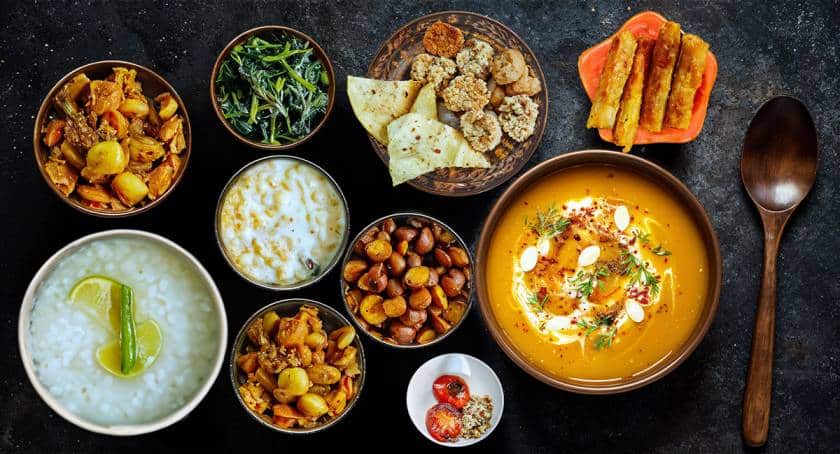Pakhala Dibasa: The Story of Fermented Rice
Odisha, a land rich in heritage and culinary traditions, celebrates Pakhala Dibasa on March 20th every year. People dedicate this special day to Pakhala, a fermented rice dish that serves as a staple meal in Odia households and symbolizes comfort, nostalgia, and tradition. As summer temperatures soar, this dish is a cooling and nutritious option, making it an integral part of Odia cuisine. Pakhala is more than just food; it is an emotion for Odias, deeply ingrained in their daily diet and cultural identity
What is Pakhala?
Pakhala is a simple yet highly nutritious dish prepared by soaking cooked rice in water and allowing it to ferment overnight. The fermentation process enhances the flavor and imparts probiotic benefits, making it an excellent aid for digestion and gut health. People usually pair the dish with traditional side dishes, such as fried vegetables, fish fry, saga bhaja (fried greens), badi chura (sun-dried lentil dumpling crumble), curd, and raw onions. The combination of flavors makes it a wholesome and satisfying meal.
Types of Pakhala
People across Odisha prepare Pakhala differently, offering a unique taste and texture. Some of the most popular types include:
- Jeera Pakhala – Infused with roasted cumin seeds, this variant has a distinct aroma and enhances digestion.
- Dahi Pakhala – Mixed with curd, giving it a tangy taste and added nutritional value.
- Basi Pakhala – Left to ferment overnight, this version is rich in probiotics and preferred for its mildly sour taste.
- Saja Pakhala – A fresh preparation with cold water added to warm rice without fermentation, making it an instant cooling dish.
- Chun Pakhala – In this zesty variation, people add lemon juice, onions, and green chilies for an extra kick of flavor.
With each variety of Pakhala, there is something for everyone to appreciate, regardless of their interests and preferences.
The Significance of Pakhala Dibasa
Odia food enthusiasts first introduced Pakhala Dibasa on social media to promote and celebrate Odisha’s traditional food culture. Over time, the movement gained popularity, and March 20th was officially recognized as the day to honor this beloved dish. The celebration serves several important purposes:
- Preserving Traditional Food Culture – In the era of fast food and modern dining trends, Pakhala Dibasa helps revive and promote traditional Odia cuisine.
- Highlighting Health Benefits – The event educates people on fermented rice’s probiotic and cooling properties.
- Encouraging Sustainable Eating – Pakhala is an economical and sustainable meal that uses leftover rice and promotes minimal food waste.
Why is Pakhala the Perfect Summer Dish?
Odisha experiences extreme heat during the summer months, and Pakhala becomes an essential part of daily meals to combat the rising temperatures. People prefer it for the following reasons:
- Hydration – The fermented rice water (torani) helps keep the body hydrated.
- Cooling Effect – The dish prevents heat strokes and keeps the body temperature in check.
- Probiotic Benefits – It aids digestion, improves gut health, and boosts immunity.
- Light and Digestible – Unlike heavy meals, Pakhala is easy on the stomach, making it ideal for hot weather.
Traditional Accompaniments with Pakhala
People typically serve Pakhala with various flavorful accompaniments that enhance the meal experience. Some popular side dishes include:
- Badi Chura – Crushed lentil dumplings that have been sun-dried and combined with mustard oil, onions, and chilies are called badi chura.
- Saga Bhaja – Stir-fried leafy greens like spinach or amaranth provide essential nutrients.
- Aloo Bharta – Aloo Bharta is made with mashed potatoes, green chilies, onions, and mustard oil.
- Fried Fish (Macha Bhaja) – Macha Bhaja, or fried fish, is a tasty and crispy non-vegetarian ingredient.
- Ambula Rai – Ambula Rai is a tart mango-based meal that balances Pakhala’s sourness.
- Patalghanta Chutney – A distinctive chutney made from raw mango and sesame seeds is called patalghanta chutney.
These side dishes add flavor and texture and provide additional nutrients that make Pakhala a balanced meal.
How to Make Pakhala at Home?
Making Pakhala is simple and requires minimal ingredients. Here’s a basic recipe to prepare this refreshing dish:
Ingredients:
- 2 cups of cooked rice (ideally one day old)
- 3-4 cups of water
- 1 tablespoon curd (optional for dahi pakhala)
- Salt to taste<
- Mustard seeds, cumin seeds, curry leaves (for tempering, optional)
- Green chilies and ginger (optional for added flavor)
Instructions:
- Take cooked rice in a bowl and add water to it.
- Let it ferment overnight or for at least 6-8 hours.
- Before serving, add salt and curd (if making dahi pakhala) and mix well.
- Optionally, temper with mustard seeds, cumin seeds, curry leaves, and green chilies for extra flavor.
- Serve chilled with your choice of accompaniments.
Pakhala Dibasa Celebrations
People across Odisha enthusiastically celebrate Pakhala Dibasa. They prepare different variations of Pakhala and share their meals on social media. Many restaurants and hotels introduce special Pakhala platters to mark the occasion, making it a festive and communal event. Families and communities come together to enjoy this wholesome dish, reinforcing the importance of traditional food in today’s lifestyle.
Final Thoughts
Pakhala is not just a meal; it represents a way of life for Odias. Pakhala Dibasa serves as a reminder of Odisha’s rich cultural and culinary heritage, promoting its health benefits and significance. In an era where fast food dominates, reviving and appreciating such traditional foods is crucial for maintaining a healthy and sustainable lifestyle.
So, this March 20th, celebrate Pakhala Dibasa with a chilled Pakhala, relish the taste of Odisha’s heritage, and experience the comfort of this simple yet wholesome dish!


